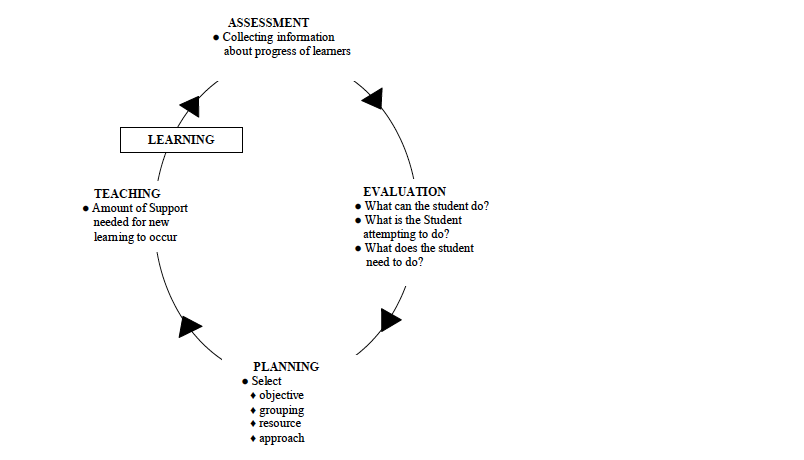RtI (Response to Intervention) Data Teams,
Flooding and Instruction to Meet Your Student’s Needs (Differentiation)
The Teaching and Learning Cycle

When teachers teach, it is their goal to provide to each child the amount of support necessary to ensure that new learning takes place. For that to happen, the teacher must know exactly what each student knows, where the students’ strengths and weaknesses lie. Teachers make decisions based on the teaching and learning cycle. This cycle describes the process by which teachers make instructional decisions to meet the needs of all students. There are four elements that make up the cycle-assessment, evaluation, planning and teaching. Teachers must have an excellent knowledge of standards and expectations for students at their grade level to use this information wisely. The goal of any teaching is to produce new learning which in turn provides new assessments for the teacher to evaluate.
Assessment and Evaluation
The cycle begins with assessment for all students at a certain level. For example, in the data team process, we at Edison use STAR Reading or STAR Early Literacy in combination with CSAP scores, DRA scores, DPS Benchmark scores, unit test scores and teacher observations (just to name a few) to evaluate our students strengths and weaknesses in reading. The grade level team evaluates the assessments and groups students accordingly according to their needs. The evaluation is formative, to indentify the teaching that is needed to help each learner move forward or to challenge each student at the proper level. The grade level team then discusses best practices in teaching so that student’s learning is optimal.
Flooding
This is where the Flooding model fits in. Students are grouped through the data team process at levels to meet their individual needs. Through careful planning of a master schedule, each grade level teaches the same subject at the same time. This allows all special education staff, intervention staff and paraprofessionals to be available at reading and math instructional time and to FLOOD a grade level. During this time, this extra staff allows for differentiated learning and smaller group size so that each and every child’s needs can be met. Your child will be grouped with students with similar needs. This may mean that they see a teacher other than their homeroom teacher for reading and/or math. Flooding grouping is discussed every six weeks in data teams and this grouping is fluid. As children’s needs change, so does their grouping.
Planning and Teaching
Flooding groups are created, but that is just a part of the teaching and learning cycle. Planning with a goal in mind leads to focused teaching. To that end, teachers discuss best practices in instruction in data teams and meet weekly with their grade level teams to plan collaboratively. The teacher’s understanding of the instructional process and standards, combined with the input of team members, combined with the assessment evaluation of needs and challenges, guide the teacher in selecting the learning objectives for students and the methods in which those objectives will be delivered. The teacher’s careful planning provides experiences for each child that scaffold new learning, takes the learner to the next level of understanding and meets the needs of each and every child. This in turn, creates new opportunities for teachers to assess their students and continue the cycle.


